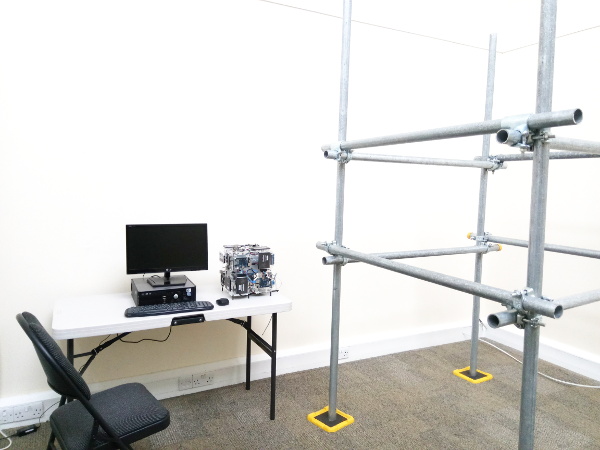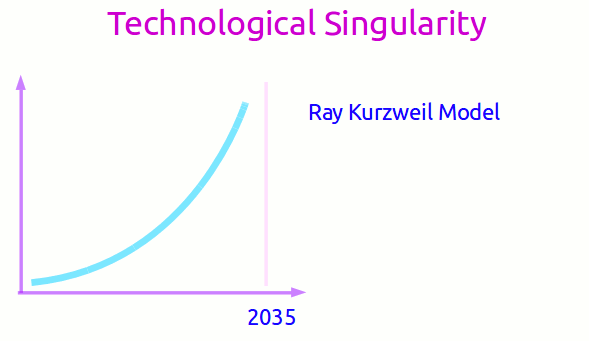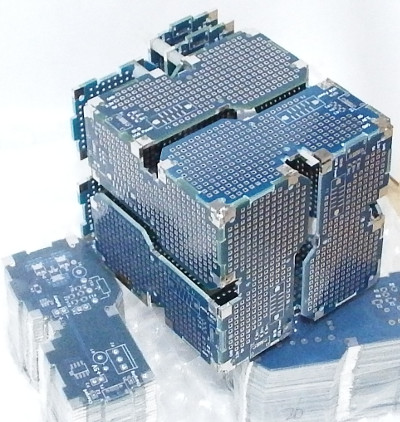Hypercube Developer Website
Hypercube Data Center (TM) Trillion Dollar Laboratory Brain Reboot
 The rational behind a Synthetic AI Hand Project is straight forward. The entire human race civilization is built by a pair of hands duplicated over and over again doing the little things that collectively becomes civilization. So if we could make a pair of really good AI infused synthetic hands, only one pair of hands would ever get built, and the rest are all just duplicates. Project details: Synthetic AI Hand Project |
1. Imagine a room filled with 3D wired Hypercubes like these:  2. The Hypercube above is 44 core supercomputer array with SSDs running Linux with Apache web hosting and ftp upload for IoT cameras. Arrays of these is what makes a Hypercube Data Center. One Linux computer is all that is needed to connect to the internal network and administer Hypercube array. 3. Hypercubes stacked in a 3D arrays leads to 3D wirable computer system which are used to make 3D wired Hypercube Data Center. The construction of the data center begins with a 3D lattice of scaffolding. The 3D lattice reaches into every corner of the building and then the Hypercubes are fitted together whilst being supported by the scaffolding. Eventually the Hypercubes 3D array stands on its own supports. The scaffolding is removed leaving behind a 3D wired Hypercube Data Center (TM). 4. With funding from lead investor, we move into new office to perfect practical construction and scaling up exercises.  5. The Technological Singularity is coming and its importance is in scaling up of Hypercube. 6. Ray Kurzweil is an incredible genius who noted that human technology is evolving at an exponential path - most notably information technology. If this pace were to continue then by around 2035 technological evolution would become exponential and vertical. But there is currently a problem. We are supposed to be in the era of 3D computer chips today as Moore's Law is tailing off and unable to keep up with demand. 7. The next best thing for 3D wired computer technology is a 3D wirable computer array. Hypercubes are just that - a 3D wirable system positioned right at the cusp of disruptive change where we are to transition from 2D electronics to 3D electronics. Hypercubes allow the construction of 3D wired computers and Hypercube Data Centers. It allows semiconductor manufacturers to commit vast new production lines for next generation lower power high density memory fabrication lines and the expansion of lower power finer geometry semiconductor production lines consistent with Moore's Law because Hypercubes can consume all of that production into Hypercube Data Center to service the entire global demand for server space. 8. A Hypercube Data Center we calculate with today's technology the size of 3km x 3km x 300m of Hypercube can contain enough data storage and processing power to simulate a brain in every detail with every neuron and every neuron interconnection modelled with 1 yottabyte of storage. Will that machine think like a human? No one can tell today. If every neuron and its interconnection has been modelled (the data having been first extracted through slicing a brain a few nano meters deep and imaging all the detail), this brain will wake up with all its memory in tact and electrical activity in the simulated neurons flowing in the same way as the real brain. We will simulate the eye and auditory senses, and a way to control output voice synthesizer, and thus this brain will have the same input as real eyes and ears and be able to talk back. If it is living, it will respond back with the same thoughts as the original person. 9. If the person was a science graduate, we could ask them to solve complex problems and speed up the electrical activity such that this brain is operating 10 to 100, may be thousands to millions of times faster than a human brain, and we get answers out quicker. If the person was a computer science graduate, we can ask them to write a program according to specifications and speed up their time line and they can write it out is seconds from reading the specifications. That is actually a big result to take away. It suggests that neural nets can potentially write computer programs from specifications. 10. The Technological Singularity Curve tells us that the price of 1 yottabyte storage built with Hypercubes will halve every year and its size and power consumption will also halve. What is incredible is that we rapidly arrived at a point in time where technology has advanced so much to the point where we are able to do all of these operations with a methodical plan. 11. For years now we have been storing frozen brains of rich individuals who hope to be woken up in the future when medical technology has advanced to the stage where all the cells are repaired and the brain can be rebooted. By taking slices of brain, and imaging all of the connecting paths and modelling how all those connections should be functioning, it will be possible to reboot a brain into existence in a laboratory. 12. About a year ago, the reboot would have cost one trillion dollars and a Hypercube Data Center of about 10km x 10km x 300m. Now it is about 3km x 3km x 300m and a cost of about half trillion dollars. The Hypercube Tesseract Data Center(TM) is even more compact and cheaper to produce with automated assembly. 13. Half a trillion dollars is not lot of funding considering Google, Amazon, Apple etc are worth more than half trillion dollars EACH. Such spending would create a boom in economic activity across the globe as semiconductors and storage stocks surge up. Because the project is as monumental as building the Pyramids of our time, it would create at least 100,000 to 1 million new jobs. 14. At the end of it all, we would have a mission command center just like a Moon launch mission control, and hundreds of data scientists monitoring their terminals to check in on the first brain reboot. If it stalls, we reboot again after adjusting software algorithms. 15. What mission control will try to do is orchestrate the boot brain activity to emulate that of normal human beings waking up from sleep. We will have plenty of brain scans before then to tell us how in general the brain's various centers function and communicate and so we will try to emulate all of those in software. 16. When a digitally simulated brain does wake up, it should wake up in a conscious way similar to a real brain and start asking itself questions such as where they are and what happened. These we would be able to understand from known brain scan of activity of real people waking up and comparing the brain firing patterns. So when we see those patterns emerging in the digitized brain, we will know that a personality is present in that simulation. 17. We can continue the simulation and interface to it with visual images and stimulating the visual cortex identically to the way our real eyes stimulate them from seeing an image, and if we see activity such as recognition of familiar faces that the person knew, then we will know that the conscious digital simulation reaction is about as real as a real person will make. 18. Such a brain can be rebooted and tasked in numerous ways to take away how neurons understand software programming, mission planning, project planning, R&D, etc and then we could feed in different tasks and speed up the neurons to solve problems. What we take away we recreate in optimized neural networks specific to problem solving. We could get these new neural nets to solve half a trillion dollar worth of problems in a few weeks. |
 Hypercube PCBs come with their own interchangeable software to mix and match functions as needed. Designed around IoT needs, we make prototyping work fast and effortless. |
| | Home | More | |
||
 Electronics Store Opening Soon |
||
Copyright (C) Hypercube Semicondutors 2018 |